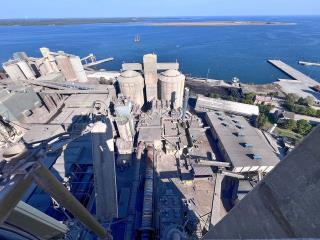Different world regions present different challenges to the cement industry. While in the fast-growing economies of Asia and Africa building capacity and security of supply are key, cement plant operations in other regions are more affected by the need to reduce CO2 emissions as their economies aim for decarbonisation. There is good news for both sides: the use of a new clean fuel can make a decisive contribution to tackling either challenge. By Wolfgang Moser, NextFuel AB, Sweden.
The worldwide climate change debate impacts the cement industry from two sides: not only is cement production a major energy consumer, it also produces CO2 from the calcination process like no other industry. The IPCC (Intergovernmental Panel on Climate Change) Guidelines for Greenhouse Gas Inventories define specific accounting methods for this very aspect of cement production, and organisations such as the Global Cement and Concrete Association (GCCA) have made it their mission to raise awareness in the industry about sustainability issues.
